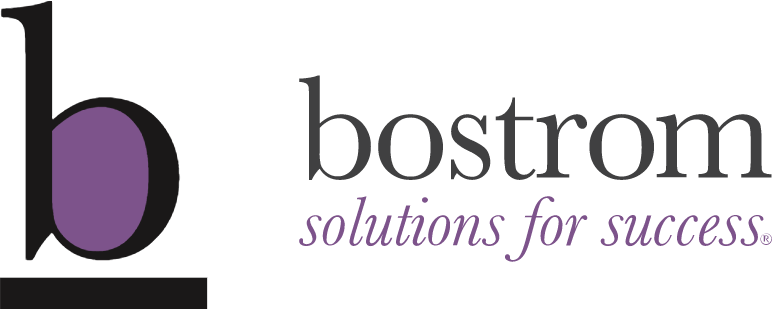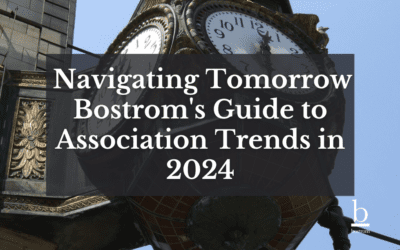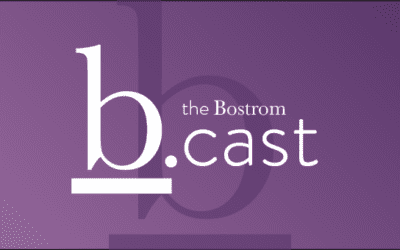Christopher J. McDonnell, CFP®, AIF®, Principal, McDonnell Capital Management
Discussing investments and risk tolerance with your Board of Directors can be stressful. You have individual risk tolerances to navigate, Board turnover, and market fluctuations, the latter for which no one wants to be “responsible” when there’s a downturn. Some Boards argue it is their fiduciary duty to not lose a penny of its reserves. Other Boards are adamant it would be a breach of that same duty if they were not actively growing reserves and investing accordingly. Who is right, who is wrong? Hint: It depends.
One of the most common questions we get from executive and volunteer leaders is related to when the association is adding to cash reserves (savings), has strong fiscal management, has the capacity to take the risk, but continues to invest those reserves in certificates of deposit. The executive or volunteer wants to help the association increase revenue from its reserves, and potentially set a portion aside for prudent growth and investing back into member products and services. However, either they do not know where to start, the conversation went nowhere in the past, or are scared they will say something that will backfire later.
Here’s a way to lead a constructive conversation about needs and strategy (without fear of saying something you’ll regret), and continue to do what you do best – add tremendous value to the association!
Step 1: Stop talking about risk tolerance, start talking about liquidity.
- If you try to start an investments conversation with the words risk tolerance, it will end quickly with zero consensus. Instead, lead with the association’s liquidity needs. “Liquidity” is defined as the availability of liquid (cash) assets to an association or organization. Start by identifying any past history of taking money from reserves to fund an annual operating shortfall (when expenses exceed revenues), and any foreseen or planned liquidity needs outside of the annual budget (e.g., capital projects, investments in infrastructure, new programs, and services, etc.) over the next 12-24 months.
Example:
One Year Ago: $70,000 was accessed from reserves (savings) to make a hotel deposit for an upcoming conference; shortfall occurred due to timing differences in annual budgeted conference revenue.
Next Fiscal Year: Planned launch of new online learning and certification system; $95,000 initial investment.
Step 2: Use data – the association’s own data – to stress test and forecast revenue.
- Take a three-year (3 yr.) snapshot of past actual revenue and expenses, and simulate years of underperforming revenue against years of high expenses to determine worst case scenarios in annual operating shortfalls (Figure A shows a trailing three-year actual revenue pattern, and forecasted worst case scenario using this basic method).
- Best practice would also go a step further by looking at past financials and asking common questions such as, “What if our membership dues fell by 20% due to industry consolidation?” and/or “What if annual conference sponsorship fell by 50%?” If that occurred, determine if it would have been necessary to access reserves to pay the bills during those income downturns.

FIGURE A
Step 3: Assign time horizons to those planned and potential liquidity needs
These planned and potential liquidity needs become the foundation for financial planning. Once time horizons are assigned to those needs, the Board can better understand overall reserve strategy and compartmentalize how it manages risk.
Example:
0-1 years: Worst Case Scenario: One Year of Potential Operating Deficit: $90,000
0-1 years: Operations Backstop for Funding Liabilities (timing difference): Potential $70,000 needed
1-2 years: Worst Case Scenario: Another Year of Potential Operating Deficit: $90,000
1-2 years: Launch New Learning System: $95,000 needed
3-5 years: None
5+ years: None
Step 4: Put it all together using the “bucket” approach
Liquidity driven investing is an academic institutional asset management framework that relies on liquidity and time horizon as the driving factors behind investment objectives and risk. Using a “bucket” approach helps answer the commonly asked questions such as “how much of our reserves should be kept liquid” and “how much risk should we be taking,” among others. These buckets are purposely ranked in order of funding priority, so if you are trying to answer the question, “Are we healthy enough for investment risk, and if so, to what extent?,” the answer lies in this process. If you cannot fill Buckets #1 and #2, you likely should be prioritizing funding a short term reserve before talking about investment risk. Because the framework is driven by the association’s own data and liquidity needs, it becomes easier to build Board consensus. Also, communication is stronger between the Board and Adviser, and the action to liquidate some of the reserves tend to be more deliberate and purposeful.
Figure B assumes an association with the above liquidity needs and an investment reserve of $900,000. Additions and subtractions to reserve amounts flow through the ladder so that the nearest term needs are funded first, and additional amounts, if any, are invested in order of increasing time horizons. Short-term liquidity needs are paired with little to no risk, while amounts above those identified needs are freed up for longer term investing.
McDonnell Capital Management is a boutique, independent registered investment adviser (RIA) that provides thought-leadership to institutions and associations. As an Accredited Investment Fiduciary®, our firm principals maintain fiduciary standards that exceed those governing the investment management industry in the U.S. Those standards saturate key areas in the investment process, including: Investment Policy Statement creation; financial modeling, planning and assessment; investment management, review and evaluation; and, client service and experience.
If you have further questions, Chris McDonnell can be reached at chris@mcdonnell-capital.com.






